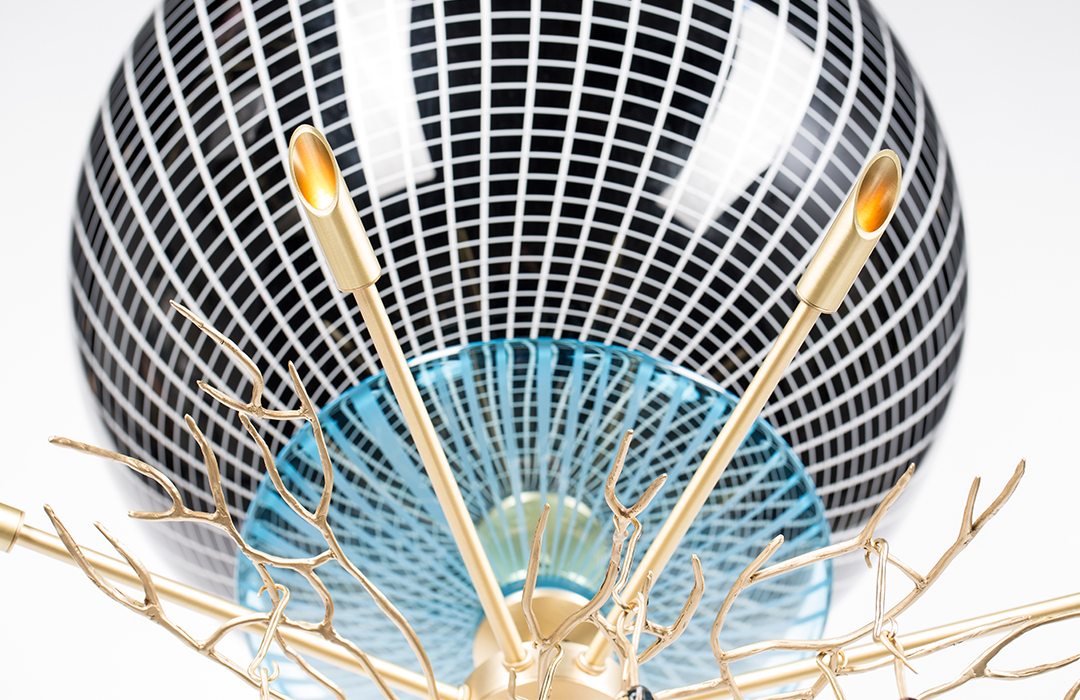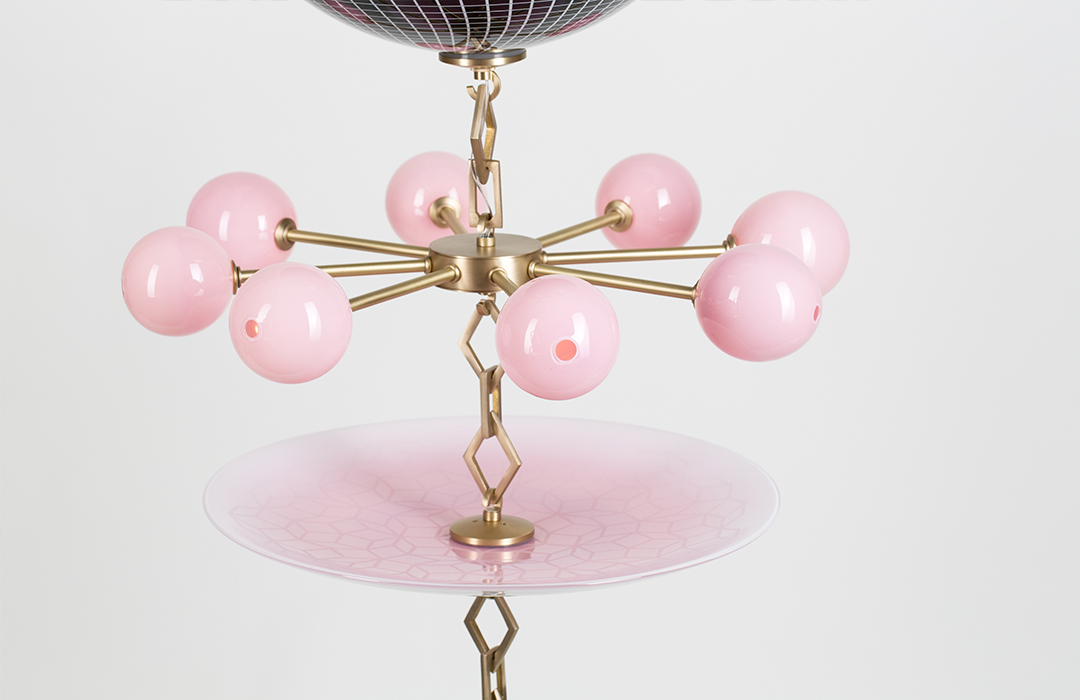From afar, the pieces in Lindsay Adelman’s Totem collection, a one-off series of handmade chandeliers, look like intricate earrings you’d see dangling from the lobes of an elegant woman. Designed exclusively for The Future Perfect (a company that celebrates boundary-pushing décor), the collection consists of three pieces—Totem I, Totem II and Totem III—that merge the functionality of a light fixture with elements of conceptual art. “I love the category of lighting because it has an effect on an entire space and mood,” says Adelman. All three pieces are mammoth in size (Totem II, pictured here, is more than six-and-a-half feet tall) and, despite the collection’s vintage vibe, each element was created specifically for this project.
In addition to lighting design, Adelman’s creative endeavours continue this summer with a collection of gold fungus mirrors, a jewellery line and a music video, all launching on June 25 at New York City’s Wright Gallery.
Here, the designer discusses her inspiration and the construction of her statuesque Totem chandeliers.
S/: How did the partnership with The Future Perfect come about?
Lindsay Adelman: Owner David Alhadeff has been one of my favourite people to work with since 2009. We have lots of ideas on what to do together and the timing was right with the Totem collection.
Where did you draw inspiration for the Totem series?
I like juxtaposing unexpected elements by combining luxurious modular units in a spontaneous manner. When I look at these pieces I see layers of different seasons and weather patterns—and sometimes a fertility goddess.
The juxtaposition of these textures and shapes makes a beautiful and unexpected statement. How do you select which objects to partner together?
It is an intuitive, quiet process coming up with ideas, and then I bring in my team for a collaborative process to make it happen.
I think that combining, for example, thorny bits—communicating threat or self-protection— with large, round forms—womblike, nurturing, or another kind of protection—plus many other elements can relay something to an audience in a manner that does not need to be analyzed. We let it wash over us, but we feel something.
You worked with glass artist Nancy Callan to create the glasswork for these three pieces. How did that relationship come about?
Nancy and I first worked together in Seattle in 1996. She is one of America’s most collected and accomplished glass artists. I commissioned these lighting elements from her that are informed by her fine art. We continue to inspire and push each other.
Your chandeliers look like beautiful sculptures. Why is it important for you to merge lighting with art?
I allow for sculptural influences but my work is firmly rooted in design. I look for freedom in everything I do, so I think in lighting it comes out in ways that are sometimes unexpected. But my approach does not resemble thinking that “merging art and lighting is important.” I would describe it more accurately as a craving or insane curiosity and an urge to see something for real that is only floating around in my head at the moment. I do everything it takes to see it happen in real life.
What type of décor aesthetic would the owner of a Totem chandelier possess?
An extreme one.


